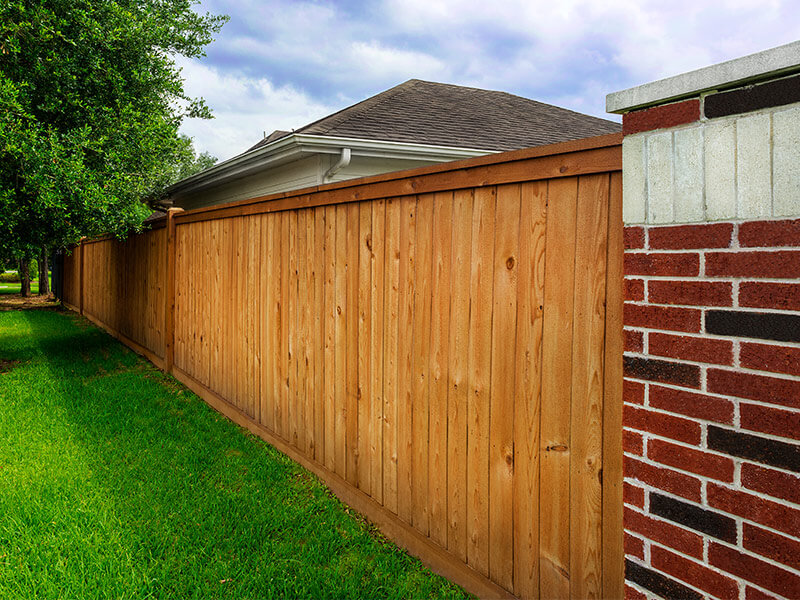Trustworthy Fence Staining Service: Maintain and Refresh Your Fence!
Trustworthy Fence Staining Service: Maintain and Refresh Your Fence!
Blog Article
How to Choose the Right Fence Stain for Your Building
When it involves improving the appearance and durability of your residential or commercial property's fence, picking the right stain is an essential decision that calls for mindful factor to consider. With a myriad of alternatives offered out there, each dealing with different timber kinds, shades, and openness degrees, the procedure can swiftly come to be overwhelming. Making an enlightened choice can considerably impact the overall visual appeals and durability of your fencing. Just how can you ensure that you choose the best fence tarnish that straightens with your residential or commercial property's design and upkeep needs? Let's check out some crucial variables to guide you in this decision-making process.
Comprehending Wood Kind
To select the suitable fencing discolor, it is important to have a thorough understanding of the various kinds of timber commonly made use of for secure fencing. When picking a fencing discolor, it is vital to take into consideration the kind of timber being used to make sure compatibility and optimum protection. Comprehending the qualities of different timber kinds will aid you make a notified choice when it comes to selecting the ideal fencing discolor for your property.
Choosing the Right Color
Choosing a suitable hue for your fencing stain is a critical choice that substantially affects the total visual allure of your residential property. Lighter colors such as whites or light grays can make a fence appear larger and include a touch of beauty to your residential or commercial property. Ultimately, the ideal color option will boost the appeal of your fence and boost the overall visual appeal of your home.

Thinking About Openness Levels
When selecting the best color for your fencing stain, one more crucial element to think about is the level of openness that will finest fit your residential property's aesthetic and upkeep needs. Openness degrees in fencing discolorations typically drop into three classifications: clear, semi-transparent, and solid. Take into consideration the degree of direct exposure your fence encounters, the preferred maintenance frequency, and the aesthetic you wish to accomplish when selecting the right transparency degree for your fencing discolor.
Reviewing Upkeep Needs
Considering the longevity and upkeep of your fence, evaluating the maintenance requirements is critical in identifying one of the most suitable fencing tarnish for your residential property. The level of upkeep required for your fence can differ relying on elements such as the kind of wood, weather in your location, and your personal preferences.
When evaluating upkeep needs, it is important to take into consideration the toughness of the fence discolor. Some discolorations need more regular reapplication than others, so picking a tarnish with a much longer lifespan can aid minimize the overall upkeep requirements of your fencing (Fence Staining Service). In addition, factors such as resistance read more to UV rays, water, and mold can affect how commonly you need to re-stain your fencing

Testing Samples Before Application
Prior to applying any type of fence discolor, it is advisable to conduct sample examinations to make sure compatibility with the timber and desired visual outcome (Fence Staining). Examining examples enables you to assess how the stain will certainly interact with the certain sort of timber made use of in your fencing, as different woods can soak up discolorations in different ways. To start, pick a little low-profile area of the fence to apply the discolor examples. It is suggested to check multiple tarnish options on this area to contrast colors and surfaces. Consider how the stain looks when completely dry, as it might show up different from its wet application. In addition, observe just how the discolor matches the existing aspects in your outdoor space, such as landscaping or the shade of your home. Make note of exactly how the discolor stands up to weather problems like sunlight and moisture. By checking examples prior to full application, you can make an educated decision that enhances the overall appearance of your residential or commercial property while safeguarding the timber properly.
Conclusion
To conclude, choosing the proper fence discolor for your property includes comprehending the timber kind, picking the best color, considering openness degrees, assessing upkeep requirements, and testing samples prior to application (Fence Staining). By taking these factors right into consideration, you can make certain that your fence discolor enhances your residential property while supplying the essential security and longevity. Make an educated choice to improve the appearance and durability of your fencing
Report this page